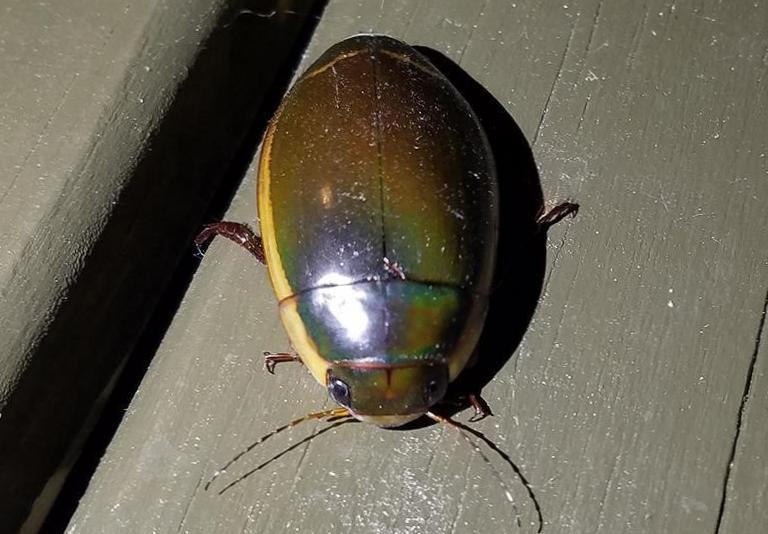Can diving beetles bite? Exploring the biting capabilities of diving beetles
Can Diving Beetles Bite? Exploring the Biting Capabilities of Diving Beetles
Diving beetles are fascinating creatures that inhabit freshwater habitats all around the world. These insects are known for their unique ability to swim and dive underwater, thanks to their specialized adaptations. With their streamlined bodies, flattened legs, and gills that allow them to extract oxygen from the water, diving beetles are truly aquatic marvels. But can they bite? Let’s find out. While diving beetles do possess powerful jaws, they are primarily carnivorous and use their mandibles to grasp and capture prey rather than bite humans. Their bite might appear painful, but it is generally harmless to humans. However, these insects can defend themselves if they feel threatened, and their bite can be quite unpleasant to smaller creatures. Take a closer look at these fascinating predators in the images and videos below.
Can Diving Beetles Bite? Exploring the Biting Capabilities of Diving Beetles
Diving beetles, also known as water beetles, are fascinating creatures that spend most of their lives underwater. These aquatic insects are well-known for their impressive ability to swim and dive, but can they also bite? Let’s dive into the biting capabilities of diving beetles and debunk some common misconceptions.
Contrary to popular belief, diving beetles do have the ability to bite. However, their bites are not something to be overly concerned about. Diving beetles have mandibles that they use to capture and hold onto their prey. While they may be capable of biting humans if they feel threatened, their mandibles are usually not strong enough to pierce our skin.
It’s important to note that diving beetles are not aggressive towards humans and rarely bite unless provoked. These fascinating insects are more interested in hunting and feeding on small aquatic creatures such as insects, tadpoles, and even small fish.
To better understand the anatomy of diving beetles, it’s essential to examine their mouthparts. Diving beetles have strong and sharp mandibles that are adapted for capturing and consuming their prey. These mandibles are used to grasp and immobilize their victims as they are being devoured.
To get a closer look at the biting capabilities of diving beetles, check out the video below:
In conclusion, diving beetles can indeed bite, but their bites are generally harmless to humans. These fascinating creatures play an important role in maintaining balance in freshwater ecosystems by controlling the populations of smaller aquatic organisms. So the next time you come across a diving beetle, remember they are more interested in hunting their prey than biting you!
Can Diving Beetles Bite? Exploring the Biting Capabilities of Diving Beetles
When it comes to beetles, the diving beetle often stands out for its unique abilities. Found in freshwater habitats around the world, these fascinating creatures are not only excellent swimmers but also possess an impressive set of mandibles. But can diving beetles actually bite? Let’s dive into their biting capabilities and explore the function of their mandibles in feeding.
Diving beetles are equipped with strong and sharp mandibles, which are their primary tools for capturing prey. These mandibles are located on the front of their heads and are used to catch and crush their food. One of the defining features of diving beetle mandibles is their serrated edges, which allow them to effectively grip their prey. Whether it be small insects, tadpoles, or even small fish, these resilient mandibles enable diving beetles to secure their meal with ease.
The mandibles of diving beetles also play a vital role in the feeding process. Once the prey is caught, the beetle’s mandibles can swiftly cut and tear it apart into smaller, more manageable pieces. This not only makes it easier for the beetle to consume its meal but also aids in the digestion process. Additionally, some diving beetles have mandibles that are specialized for injecting digestive enzymes into their prey, breaking down the internal tissues and making them easier to consume.
It’s important to note that while diving beetles have powerful mandibles, they typically pose no threat to humans. They are not aggressive towards us and generally prefer to feast on smaller aquatic organisms. However, if handled or provoked, they may attempt to defend themselves by delivering a mild bite, which may cause a slight discomfort.
In conclusion, diving beetles are indeed capable of biting, thanks to their impressive mandibles. These specialized tools allow them to capture, grip, and tear apart their prey, making them highly efficient hunters in the aquatic world. So the next time you spot a diving beetle gliding through the water, remember to appreciate the remarkable biting capabilities hidden within this small but mighty creature.
Can Diving Beetles Bite? Exploring the Biting Capabilities of Diving Beetles
Diving beetles are fascinating aquatic creatures that possess admirable hunting skills. One question that often arises when discussing these insects is whether they can bite. To answer that, we must delve into the unique mouthparts that diving beetles possess. These remarkable beetles have prominent mandibles which they utilize for capturing their prey. Their jaws are not suitable for piercing the human skin, so you can rest assured that encounters with these beetles won’t result in painful bites. However, in the animal kingdom, diving beetles are skilled predators, using their powerful mandibles to seize and devour smaller aquatic organisms. Curious how they achieve this? Let’s explore the behavior of diving beetles in detail.
Diving beetles use their mouthparts to capture prey efficiently. With their powerful mandibles, these beetles can swiftly grab their unsuspecting victims. They are known for their ability to snatch small fish, tadpoles, and even insects that are larger than themselves. This makes diving beetles the apex predators of their watery habitats. Their mandibles are hinged, allowing them to open wide and generate enough force to capture prey effectively. The mandibles close rapidly, securing their prey in a firm grip. Once trapped, the diving beetle injects digestive enzymes into the captured prey, breaking them down into more manageable pieces, which are ultimately consumed.
Apart from their impressive biting capabilities, diving beetles have unique behavioral characteristics that make them even more intriguing. These beetles are incredibly agile swimmers, thanks to their streamlined bodies and paddle-like hind legs. They navigate through water with ease, preying on smaller creatures that unknowingly cross their path. Interestingly, diving beetles have a fascinating adaptation that allows them to breathe while submerged. They trap air bubbles beneath their hardened wing covers, also known as elytra, which acts as a makeshift oxygen supply. This enables diving beetles to remain underwater for extended periods, enhancing their effectiveness as predators.
In conclusion, diving beetles may not possess the ability to bite humans, but their powerful mandibles make them fearsome hunters in their aquatic habitats. From capturing prey with lightning speed to their unique adaptations for survival, these beetles are true marvels of nature. Keep scrolling for more captivating images and videos showcasing the incredible world of diving beetles.
can diving beetles bite






